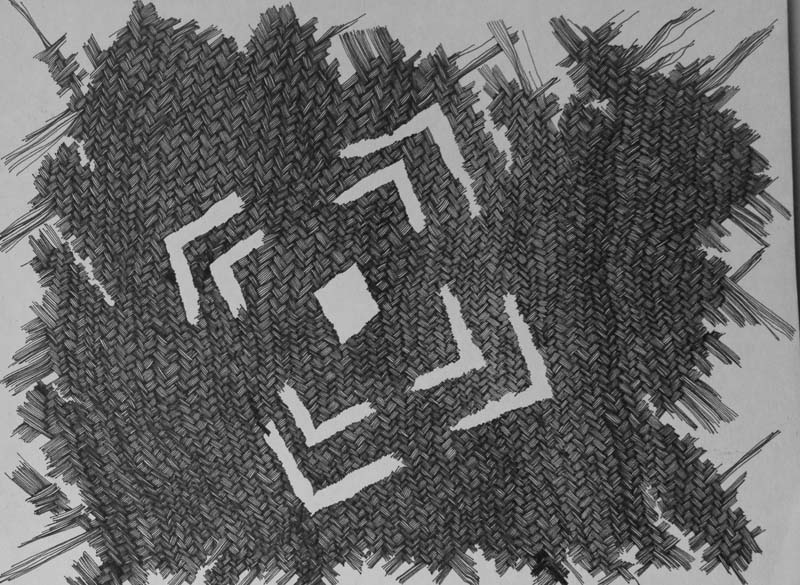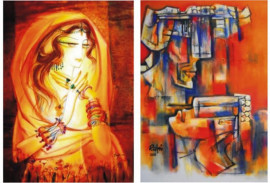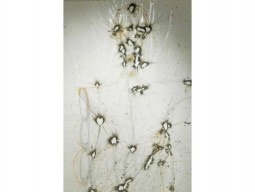
Lakho, who has studied at the University of Sindh, Jamshoro, used a pen and ink on paper to create intricate designs of mats made of date leaves and straw. A frequent sight, even in cities, these mats are often used as sheets for sitting on and as blinds and had been drawn intricately on paper with very fine detail. Though a majority of the pieces were laminated, one large drawing had been left uncovered. A closer look at this particular piece leaves one a bit dazed, owing to its intricate, flawless details and the hard work that obviously went into creating it.
As simple as the work is, the artist himself seems to be shy of speaking about it. Not wanting to explain the mysteries that surround his work, he leaves it open for the viewer to interpret it in his or her own way.
Dimension Seven: Invisible to the uninitiated

On insistence, he goes on to speak about the ways of the widows who diligently work on these mats. "They sit together while they work on them and share their personal stories. We can't imagine the tragedies that these women have gone through," he said, lamenting how they are not paid enough for all their hard work.
Graphite and tea wash on paper is the medium Chandio chose to bring the innocence of Sindh on to paper. Used to place freshly cooked rotis, these plates or containers in bright, shiny colours are known to be a signature of village life. But Chandio has treated them in black and white, with the most colour on page being a splash of tea, which does not at all convey the item's vivacious colours. "You express [yourself] in nice, cheerful colours when you're feeling the same within," said the artist, who seems very perturbed by the state of Sindh today. Chandio also looks up to the work of Subodh Gupta, an artist based in India, who, according to him, believes in art as a symbol of peace.
Interestingly, the shapes of these containers hint towards the use of a single type of material from one form to another. The very container that is used for placing roti within it is crafted from the remains of wheat.
The exhibition will be on display till May 17.
Published in The Express Tribune, May 12th, 2016.




































COMMENTS
Comments are moderated and generally will be posted if they are on-topic and not abusive.
For more information, please see our Comments FAQ